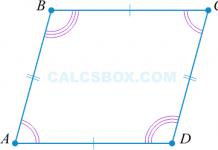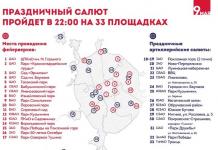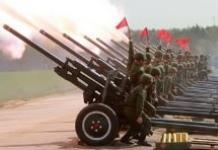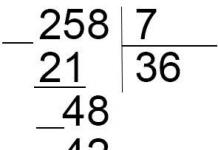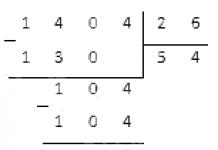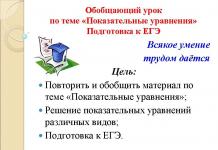PHYSICAL METHODS OF ANALYSIS
based on measuring the effect caused by the interaction. with in-tion of radiation - a stream of quanta or particles. Radiation plays roughly the same role as the reactant in chemical methods analysis. measured physical. the effect is a signal. As a result, several or many measurements of the magnitude of the signal and their statistic-stich. processing receive analyte. signal. It is related to the concentration or mass of the components being determined.
Based on the nature of the radiation used, F. m. a. can be divided into three groups: 1) methods using primary radiation absorbed by the sample; 2) using primary radiation scattered by the sample; 3) using secondary radiation emitted by the sample. For example, mass spectrometry belongs to the third group - the primary radiation here is the flow of electrons, light quanta, primary ions or other particles, and the secondary radiation is dec. masses and charges.
From a practical point of view applications more often use other classification F. m. a.: 1) spectroscopic. analysis methods - atomic emission, atomic absorption, atomic fluorescence spectrometry, etc. (see, for example, Atomic absorption analysis, Atomic fluorescence analysis, Infrared, Ultraviolet spectroscopy), including X-ray fluorescence method and X-ray spectral microanalysis, mass spectrometry, electron paramagnetic resonance and nuclear Magnetic Resonance, electronic spectrometry; 2) nuclear-no-phys. and radiochem. methods - (see activation analysis), nuclear gamma resonance, or Mössbauer spectroscopy, isotope dilution method", 3) other methods, for example. x-ray diffraction (see diffraction methods), and etc.
The advantages of physical methods: ease of sample preparation (in most cases) and qualitative analysis samples, greater versatility compared to chem. and fiz.-chem. methods (including the possibility of analyzing multicomponent mixtures), a wide dynamic. range (i.e., the ability to determine the main, impurity and trace components), often low detection limits both in concentration (up to 10 -8% without the use of concentration) and in mass (10 -10 -10 -20 g), which allows you to spend extremely small amounts of samples, and sometimes carry out. Many F. m. and. allow you to perform both gross and local and layer-by-layer analysis from spaces. resolution down to the monatomic level. F. m. a. convenient for automation.
Using the achievements of physics in the analyt. chemistry leads to the creation of new methods of analysis. Yes, in con. 80s mass spectrometry with inductively coupled plasma, nuclear microprobe (a method based on the detection of X-ray radiation excited by bombarding the sample under study with a beam of accelerated ions, usually protons) appeared. The fields of application of F. MA are expanding. natural objects and tech. materials. A new impetus to their development will give the transition from the development of theoretical. foundations of individual methods to create general theory F. m. a. The purpose of such studies is to identify physical. factors that provide all connections in the analysis process. Finding the exact relationship of analyte. signal with the content of the determined component opens the way to the creation of "absolute" methods of analysis that do not require comparison samples. The creation of a general theory will facilitate the comparison of F. m. among themselves, the correct choice of method for solving specific analyte. tasks, optimization of analysis conditions.
Lit.: Danzer K., Tan E., Molch D., Analytics. Systematic review, trans. from German, M., 1981; Ewing G., Instrumental Methods chemical analysis, per. from English, M., 1989; Ramendik G. I., Shishov V. V., "Journal of Analytical Chemistry", 1990, v. 45, no. 2, p. 237-48; Zolotev Yu. A., Analytical chemistry: problems and achievements, M., 1992. G. I. Ramendik.
Chemical encyclopedia. - M.: Soviet Encyclopedia. Ed. I. L. Knunyants. 1988 .
See what "PHYSICAL METHODS OF ANALYSIS" is in other dictionaries:
- (a. physical methods of analysis; n. physikalische Analyseverfahren; f. procedes physiques de l analyse; and. metodos fisicos de analisis) a set of methods of qualities. and quantities. analysis of substances based on the measurement of physical ... ... Geological Encyclopedia
physical methods of analysis- fizikiniai analizės metodai statusas T sritis chemija apibrėžtis Metodai, pagrįsti medžiagų fizikinių savybių matavimu. atitikmenys: engl. physical analytical methods; physical methods of analysis. physical methods of analysis ... Chemijos terminų aiskinamasis žodynas
- (РМА), methods of qualities. and quantities. chem. analysis using radionuclides. The latter can be contained in the original analyzed in ve (eg, natural radionuclides of such elements as K, Th, U, etc.), m. introduced at a certain stage ... ... Chemical Encyclopedia
- (a. chemical methods of analysis; n. chemische Analyseverfahren; f. procedes chimiques de l analyse; i. metodos quimicos de analisis) a set of quality methods. and quantities. analysis of substances, osn. on the use of chem. reactions. … … Geological Encyclopedia
Contents 1 Methods of electroanalytical chemistry 2 Introduction 3 Theoretical part ... Wikipedia
I. Method and outlook. II. Problems of historiography of pre-Marxist literary criticism. III. Brief review of the main currents of pre-Marxist literary criticism. 1. Philological study of word monuments. 2. Aesthetic dogmatism (Boileau, Gottshed ... Literary Encyclopedia
Mathematical methods used in precast concrete technology- - conditionally divided into three groups: group A - probabilistically statistical methods, including the use of general probability theory, descriptive statistics, sampling method and testing of statistical hypotheses, dispersion and ... ... Encyclopedia of terms, definitions and explanations building materials
- (in analytical chemistry) the most important analytical operations, necessary because most analytical methods are not selective enough (selective), i.e., many interfere with the detection and quantification of one element (substance) ... ... Wikipedia
TRIZ is a theory of inventive problem solving, founded by Genrikh Saulovich Altshuller and his colleagues in 1946, and first published in 1956, is a creativity technology based on the idea that "inventive creativity ... ... Wikipedia
Methods of chemical analysis physical- a set of physical methods for qualitative and quantitative analysis of chemical compounds and elements. based on measurement physical properties investigated substances (atomic, molecular, electrical, magnetic, optical, etc.). AT… … Dictionary in soil science
Books
- Physical research methods and their practical application in chemical analysis. Textbook, Ya. N. G. Yaryshev, Yu. N. Medvedev, M. I. Tokarev, A. V. Burikhina, N. N. Kamkin. Tutorial is intended for use in the study of disciplines: `Physical methods of research`, `Standardization and certification of food products`, `Chemistry environment`, `Hygiene…
The main goal of analytical chemistry- to ensure, depending on the task, the accuracy, high sensitivity, rapidity and (or) selectivity of the analysis. Methods are being developed that make it possible to analyze micro-objects (see Microchemical analysis), conduct local analysis (at a point, on a surface, etc.), analysis without destroying the sample (see non-destructive analysis), at a distance from it (remote analysis), continuous analysis (for example, in a stream), and also to establish in which chemical compound and in which phase the determined component exists in the sample (phase analysis). Important trends in the development of analytical chemistry are the automation of analyses, especially in the control of technological processes, and mathematization, in particular the widespread use of computers.
Structure. There are three major areas of analytical chemistry: general theoretical foundations; development of analysis methods; analytical chemistry of individual objects. Depending on the purpose of the analysis, there are qualitative analysis and quantitative analysis. The task of the first is to detect and identify the components of the analyzed sample, the second is to determine their concentrations or masses. Depending on which components need to be detected or determined, there are isotope analysis, elemental analysis, structural group analysis (including functional analysis), molecular analysis, and phase analysis. By the nature of the analyzed object, the analysis of inorganic and organic matter.
In the theoretical The fundamentals of analytical chemistry are dominated by the metrology of chemical analysis, including the statistical processing of results. The theory of analytical chemistry also includes the doctrine of the selection and preparation of analytical samples. about drawing up an analysis scheme and choosing methods, principles and ways of automating analysis, using computers, as well as the foundations of national economies. using the results of chem. analysis. A feature of analytical chemistry is the study of not general, but individual, specific properties and characteristics of objects, which ensures the selectivity of many. analytical methods. Thanks to close ties with the achievements of physics, mathematics, biology, etc. areas of technology (this is especially true of methods of analysis), analytical chemistry has been turned into a discipline at the intersection of sciences.
In analytical chemistry, methods of separation, determination (detection) and hybrid methods are distinguished, combining the methods of the first two groups. Methods of determination are divided into chemical methods of analysis (gravimetric analysis, titrimetry), physical and chemical methods of analysis (for example, electrochemical, photometric, kinetic), physical methods of analysis (spectral, nuclear physics and others) and biological methods analysis. Sometimes methods of determination are divided into chemical, based on chemical reactions, physical, based on physical phenomena, and biological, using the response of organisms to changes in the environment.
Analytical chemistry determines the general approach to the choice of ways and methods of analysis. Methods for comparing methods, conditions for their interchangeability and combinations, principles and ways of automating analysis are being developed. For practical the use of analysis requires the development of ideas about its result as an indicator of product quality, the doctrine of express control technol. processes, creating cost-effective methods. Great importance for analysts working in various sectors of the national economy, has the unification and standardization of methods. A theory is being developed to optimize the amount of information needed to solve an analytical problem.
Analysis Methods. Depending on the mass or volume of the analyzed sample, separation and determination methods are sometimes divided into macro-, micro-, and ultramicro methods.
Separation of mixtures is usually resorted to in cases where direct detection or detection methods do not give the correct result due to the interfering influence of other components of the sample. Particularly important is the so-called relative concentration - the separation of small amounts of determined components from significantly large amounts of the main components of the sample. Separation of mixtures can be based on differences in the thermodynamic or equilibrium characteristics of the components (ion exchange constants, stability constants of complexes) or kinetic parameters. For separation, mainly chromatography, extraction, precipitation, distillation, as well as electrochemical methods, such as electrodeposition, are used.
Physical and chemical methods of analysis, are based on the dependence of the physical properties of a substance on its nature, and the analytical signal is a value of a physical property, functionally related to the concentration or mass of the component being determined. Physico-chemical methods of analysis may include chemical transformations of the analyte, dissolution of the sample, concentration of the analyzed component, masking of interfering substances, and others. Unlike the "classical" chemical methods of analysis, where the mass of a substance or its volume serves as an analytical signal, in physicochemical methods of analysis, radiation intensity, current strength, electrical conductivity, potential difference, etc. are used as an analytical signal.
Important practical value have methods based on the study of emission and absorption electromagnetic radiation in different regions of the spectrum. These include spectroscopy (for example, luminescent analysis, spectral analysis, nephelometry and turbidimetry, and others). Electrochemical methods that use the measurement of the electrical properties of a substance belong to important physicochemical methods of analysis.
INTRODUCTION
Subject and tasks of modern analytical chemistry. The value of analytical chemistry in the development of various fields of natural science. Concept of differentiation and integration natural sciences. Chemistry and geology. The laws of chemistry and their significance for the earth sciences. The role of analytical chemistry in solving problems of geology, geochemistry, space research: determination of the material composition of the Earth, earth's crust, the study geological processes external dynamics and geological activity of natural waters, etc.
Modern methods studying the composition of substances. Qualitative and quantitative analysis of inorganic and organic substances. Chemical, physico-chemical and physical methods of analysis. Characteristics of methods and examples of their application in geology (geological research). The choice of the method for determining an element in an object, depending on its composition and the task of analysis.
I. THEORETICAL FOUNDATIONS OF ANALYTICAL CHEMISTRY
Chemical equilibria in a homogeneous system
The main types of homogeneous equilibria used in analytical chemistry: acid-base, redox, complexation equilibrium.
Mass action law. The equilibrium constant of a reversible chemical reaction. The concept of ideal and real systems. Causes of deviation from ideality. Activity, activity coefficient, its connection with ionic strength. Ionic state of elements. The concentration is general and equilibrium. α-factor (mole fraction). Thermodynamic constants, real, conditional, their relationship.
Acid-base balance. Modern views about acids and bases. Protolithic Bronsted-Lowry theory. Acid-base pairs, acidity and basicity constants, their relationship. Processes of ionization and dissociation.
Solvent types, autoprotolysis reaction. Ionic product of the solvent. Leveling and differentiating effects of solvents.
Calculation of pH in solutions of acids, bases and ampholytes. Buffer solutions and their properties.
Equilibrium of complexation. Classification complex compounds. Chelates, intercomplex compounds. changes in the potential of the redox system. Quantitative characteristics of the stability of complex compounds - general and stepwise stability constants. Types of complex compounds used in analytical chemistry and their characteristics. The use of complexation to detect, separate, mask and unmask ions, dissolve precipitates,
Theoretical basis interactions of organic reagents with inorganic ions. Functional-analytical groups, chromophore groups. Cycloformation rule L.A. Chugaev. The main factors affecting the stability of chelates are the nature of the metal ion, the basicity and denticity of the ligand, the spatial factor, etc.
The main directions of the use of organic reagents in chemical analysis (detection, determination and masking of ions). The most common organic reagents are dimethylglyoxime, 8-hydroxyquinoline, etc.
Complexons. General properties complexones and complexonates. Main directions of use of disodium salt of ethylenediaminetetraacetic acid (EDTA) for detection, masking and quantification of ions.
Redox balance. Reversible and irreversible redox systems. Equilibrium electrode potential. Nernst equation. Standard potential redox system. The concept of the real (formal) potential of the system. Factors affecting the value of the formal potential. Direction of oxidation - reduction reactions. Equilibrium constants of oxidation - reducing reactions. Connection of the equilibrium constant with standard potentials.
The rate of redox reactions. Catalytic, induced reactions in redox processes. The main oxidizing and reducing agents used in the analysis.
Redox reactions in the processes of external dynamics during the formation of sedimentary and metamorphic rocks.
Equilibrium in a heterogeneous system
Equilibrium in the system solid phase - solution. Precipitation-dissolution reactions in analytical chemistry. Thermodynamic equilibrium constant of the reaction of precipitation - dissolution (thermodynamic product of solubility). Influence of conditions on the equilibrium state of the reaction of precipitation - dissolution (real and conditional solubility products). Use of the solubility product rule in analytical chemistry.
Conditions for the formation and dissolution of precipitates. Crystalline and amorphous sediments. Dependence of the sediment structure on the nature and conditions of sedimentation. Colloidal state as an intermediate stage of sediment formation. Precipitation cleanliness. Coprecipitation. The use of this phenomenon for the concentration of microimpurities. Law V.G. Khlopin. The phenomenon of isomorphism in silicates and other minerals.
Calculation of solubility under various conditions (influence of pH, complexation, oxidation-reduction reactions, ionic strength of the solution and temperature). The influence of the ion of the same name. salt effect.
Equilibrium between two liquid phases. Extraction and its use in analytical chemistry. Distribution law. Distribution coefficient. Equilibrium constants in the liquid-liquid system (extraction constant). The use of extraction in the practice of chemical analysis.
Sample preparation for analysis and analysis.
Preliminary macro - and microscopic studies. Sampling for analysis of homogeneous and heterogeneous substances, average sample.
The choice of scheme and method of analysis depending on the composition of the analyte. Decomposition of the analyzed sample. Methods for transferring hardly soluble objects into solution: dissolution in acids and alkalis, fusion with acidic and alkaline fluxes. Analysis of various objects: minerals, ores, rocks, natural and waste water, air.
Metrological bases of analytical chemistry.
Characteristics of analytical methods. Determination of concentration by the calibration curve method and the method of additives. Limit of detection, lower and upper limits of determined concentrations, sensitivity coefficient, selectivity, time required for analysis (quickness).
Classification of errors. Systematic and random errors. Correctness and reproducibility. Statistical processing of measurement results. Normal distribution law random variables. Mean, variance, standard deviation. Validation of correctness. Comparison of variances and means of two methods of analysis. Ways to improve the reproducibility and correctness of the analysis.
II. ANALYSIS METHODS
Detection methods
Tasks and choice of detection method. Chemical, physico-chemical and physical detection methods. Qualitative analysis. Characteristics of analytical reactions. Selective and specific reagents. Methods for lowering the detection limit and increasing selectivity: the use of complexation, co-precipitation, extraction, flotation, etc. Application of precipitate formation reactions, colored compounds, gas evolution. Microcrystalloscopic, drop, luminescent, spectral analysis; powder trituration analysis. Use of organic reagents.
Analytical classification of ions. Acid-base and hydrogen sulfide analysis schemes. Systematic and fractional course of analysis. Express qualitative analysis in the field.
Separation and concentration methods.
Basic methods of separation and concentration.
Separation of elements using precipitation reactions. Application of organic and inorganic reagents for precipitation. Group reagents and conditions for their use. Characterization of poorly soluble compounds most commonly used in analysis: carbonates, chromates, phosphates, oxalates, hydroxides, sulfides. Conditions for the formation and dissolution of metal sulfides. The role of the processes of sedimentation and dissolution of sediments in the study of the laws of migration (concentration and dispersion) of elements in nature.
Chromatographicanalysis. Basic principles of the method. Classification of chromatography methods according to the state of aggregation of the phases, according to the mechanisms of separation and the technique of performing the experiment. Methods for obtaining chromatograms.
The most important theoretical provisions. Theory of Theoretical Plates and kinetic theory. Basic equations of chromatography.
Ion exchange and ion exchange chromatography. Gas chromatography. Liquid chromatography, partition chromatography on paper. Using paper chromatography to separate and detect cations.
Extraction. The concepts of extractant, diluent, extract, re-extraction. Extraction conditions, quantitative characteristics of extraction. extraction rate. Classification of extraction systems according to the type of extractable compounds. extraction methods. Separation of elements by extraction method. Increasing the selectivity of separation by selecting organic solvents, pH, masking. Devices for carrying out extraction.
Chemical methods of quantitative analysis
Gravimetric methods of analysis
The essence of gravimetric analysis. Direct and indirect methods of analysis. The most important inorganic and organic precipitants. Precipitated and gravimetric forms. Requirements for the precipitated and gravimetric forms. Precipitation, filtration and washing of precipitates.
Examples of gravimetric determinations (determination of crystallization and hygroscopic water, carbon dioxide, sulfur, iron, aluminum, barium, calcium, magnesium, phosphorus).
Analysis of carbonate rock: determination of the amount of sesquioxides, determination of calcium oxide and magnesium oxide.
Titrimetric methods of analysis.
Basic provisions and methods of titrimetric analysis.
Requirements for reactions in titrimetric analysis. Measuring utensils. Methods for expressing the concentrations of solutions. Expression of equivalent masses in various methods of titrimetric analysis. Titer. Titration. Equivalence point and end point of the titration. Chemical and physico-chemical methods for detecting the end point of titration.
Primary and secondary standard solutions. Primary standards and requirements for them. Fixanals. Separate weighing method and pipetting method for determining the concentration of working solutions. Calculation of analysis results.
Acid-base titration. The essence of the method of acid-base titration. working solutions. Primary standard solutions of acids and bases.
Calculation of pH in various moments titration. Titration curves of strong and weak acids and grounds.
Indicators in the method of acid-base titration. Theory of indicators. Interval of color transition of the indicator. Titration index. Select an indicator to establish the end point of the titration. Titration errors.
Practical application of the acid-base titration method. Determination of removable and permanent water hardness. Analysis of a mixture of carbonate and alkali, carbonate and bicarbonate. Determination of ammonium salts.
Change in redox potential during titration. Titration curve. Factors affecting the titration jump. Methods for detecting the end point of the titration. Redox indicators.
Basic redox methods of titrimetric analysis: iodometry, permanganatometry, dichromatometry. Iodometric determination of copper (II). Permanganometric determination of iron, water oxidizability. Dichromatometric determination of iron.
Complexation reactions used in titrimetry and requirements for them. Complexometry. Titration curve. Factors affecting the magnitude of the titration jump. Indicators in complexometry. Complexometric determination of water hardness, calcium, magnesium.
Metrological characteristics of chemical methods of quantitative analysis.
Physical - chemical and physical methods of analysis
Basic principles of physico-chemical and physical methods of analysis. Them a brief description of and meaning. Classification of methods of analysis. Electrochemical and spectroscopic methods. Their role for geochemical research. Analysis without destroying the analyte.
The choice of the method of analysis depending on the task at hand in the analysis of rocks, ores and minerals. Analysis of rocks for impurities (mass spectrometry, isotope analysis, X-ray methods of analysis). Processing and presentation of analysis results.
Electrochemical methods of analysis.
General characteristics of electrochemical methods of analysis. Their classification. Potential measurement. Electrochemical cell. Reversible and irreversible electrochemical reactions. Sensitivity and selectivity of electrochemical methods of analysis.
Potentiometry. Direct potentiometry. Classification and characteristics of electrodes. Indicator electrodes and reference electrodes. Ionometry: basic concepts and principles of the method. Classification of ion-selective electrodes. Selectivity factor. Potentiometric determination of medium acidity (pH), nitrate fluorides and some other ions (sodium, potassium) using ion-selective electrodes. Determination of concentration by the method of calibration of the electrode and the method of additions.
Potentiometric titration .
Requirements for chemical and electrochemical (indicator) reactions. The use of reactions of various types: acid-base, precipitation, complex formation and oxidation - recovery. Indicator electrodes and reference electrodes. Schematic diagram of a potentiometer, pH meters. Examples of practical application (determination of a mixture of acids, cobalt, etc.).
Voltammetry. Polarographic method of analysis. polarographic cell. Indicator electrode and reference electrodes. Indicator electrodes in voltammetry. Obtaining and characteristics of the polarogram. Ilkovich equation. Polarographic wave equation. half wave potential. Qualitative and quantitative polarographic analysis. Possibilities, advantages and disadvantages of polarographic analysis. Modern varieties of polarography. Examples of the practical application of voltammetry to determine the main components and impurities in minerals, ores, natural waters, and environmental objects.
Amperometric titration. The essence of the method. indicator electrodes. Selection of the potential of the indicator electrode. Type of titration curves. Examples of practical use.
Coulometry.
Theoretical basis. Methods for determining the amount of electricity in potentiostatic and galvanostatic coulometry. Direct coulometry and coulometric titration. Determination of the end point of the titration. Electrochemical generation of titrants. Practical application of the method, its advantages and disadvantages. Determination of small amounts of acid, alkali, determination of oxidizing agents, etc.
Metrological characteristics of electrochemical methods of analysis.
Spectroscopic methods of analysis.
Obtaining chemical-analytical information in the interaction of electromagnetic radiation with matter. Classification of spectroscopic methods of analysis according to the types of spectra and methods of their excitation.
Atomic emission spectroscopy. Emission spectra. Arc and spark discharge as sources of excitation. Plasmatron, inductively coupled plasma. Factors affecting the intensity of spectral lines. Practice of emission spectroscopy. Sample preparation and its introduction into the discharge. Qualitative and quantitative analysis. Chemical - spectral methods of analysis.
Emission photometry of a flame. Flame as a source of excitation. Processes that take place in a flame. chemical reactions in flames. Factors affecting the degree of atomization. Dependence of the radiation intensity on the concentration of elements in the solution.
Examples of practical application of emission methods of analysis. Determination of alkali and alkaline earth elements. Determination of traces of metals in rocks, ores, minerals, water. Application of atomic emission methods in the study of environmental objects.
Atomic absorption spectroscopy. Fundamentals of the method. The law of absorption of electromagnetic radiation. Methods for obtaining an absorbing layer of atoms (flame and electrothermal atomization). Radiation sources, their characteristics (hollow cathode lamp, laser). The principle of atomic absorption measurements. Possibilities, advantages and disadvantages of the method. Examples of practical application of the atomic absorption method in geology.
Molecular absorption spectroscopy (spectrophotometry). Theoretical foundations of spectrophotometric analysis. Basic laws of light absorption. The Bouguer-Lambert-Beer law. Values characterizing light absorption: optical density and transmission. Molar absorption coefficient. The concept of true and apparent (average) molar absorption coefficient. Causes of deviation from the laws of absorption. Methods for determining concentrations by photometric method: calibration graph method, additive method, differential photometry method.
Choice of optimal conditions for carrying out the photometric reaction. Stages of photometric analysis. Photometric determination of some elements (iron, titanium, nickel, phosphorus, silicon, etc.).
Luminescence. The main characteristics of the method. Different kinds luminescence and their classification. Basic regularities of molecular luminescence. Stokes-Lommel law. Rule of mirror symmetry of absorption and luminescence spectra. Examples of practical application (determination of rare earth elements, uranium, aluminum, etc.).
Metrological characteristics of spectroscopic methods of analysis.
III. WORKSHOPS
Methods for detecting and separating elements.
The study characteristic reactions some cations and anions. Separation and detection of cations using precipitation methods - dissolution, extraction and chromatography on paper. Detection of main components and impurities in minerals, rocks, ores ( test).
Methods for the quantitative determination of elements.
Chemical methods of analysis
Gravimetric methods of analysis. Determination of barium and sulfate ion in the sample (test).
Variants of work: Determination of calcium. Definition of iron. Definition of aluminum. Determination of sesquioxides in carbonate rock. Determination of water of crystallization in minerals.
Titrimetricanalysis methods. Acid-base titration. Preparation of a secondary standard solution of alkali and a primary standard solution of oxalic acid. Standardization of alkali solution.
Determination of the concentration of hydrochloric acid. (test). Statistical processing of measurement results. Variants of work: Determination of ammonium salts.
complexometric titration. Complexometric determination of calcium and magnesium in carbonate rock (test).
Variants of work: Complexometric determination of the total hardness of water.
Redox titration. Iodometric determination of copper (II) (test). Dichromatometric determination of iron (test).
Physico-chemical methods of analysis.
Potentiometric determination of cobalt (test). Variants of work: potentiometric titration of phosphoric acid.
Determination of fluoride ion (or individual ions: nitrates, sodium, potassium) in natural waters using an ion-selective electrode (test).
Removal and interpretation of the voltammetric spectrum (copper, cadmium, lead, nickel, zinc) (test).
Quantitative voltammetric analysis. Determination of the concentration of substances by the method of calibration curve or the method of additives (test).
Coulometric titration of thiosulfate ion (or hydrochloric acid) (test).
Amperometric titration of zinc. (optional work).
Photometric determination of an element (iron, nickel, manganese, titanium, silicon or phosphorus) (test).
Determination of high concentrations of elements (manganese, nickel, copper, etc.) by differential spectrophotometric method (test).
Luminescent determination of zirconium or organic dyes (test).
Atomic absorption determination of copper (zinc, manganese, iron)
Atomic emission (flame) determination of sodium and potassium.
Gas chromatographic determination of a mixture of alcohols (hydrocarbons).
- Fundamentals of analytical chemistry (under the editorship of Yu.A. Zolotov). In 2 books. General issues. Separation methods. Methods of chemical analysis. M.: graduate School. 2004. 361, 503 pp. Series "Classical university textbook".
- Fundamentals of analytical chemistry. Practical guide. Textbook for universities. Ed. Yu.A. Zolotova. M.: Higher school. 2001. 463 p.
- Fundamentals of analytical chemistry. Tasks and questions. Textbook for universities. Ed. Yu.A. Zolotova. M.: Higher school. 2004. 412 p.
- E.N. Dorohova, G.V. Prokhorov. Analytical chemistry. Physico-chemical methods of analysis. Moscow: Higher school, 1991.
additional literature
- D. Skoog, D. West. Fundamentals of Analytical Chemistry: in 2 hours. M.: 1979
- V.P.Vasiliev. Analytical chemistry. Parts 1-2 M.: Higher school, 1989.
The program is drawn up
Assoc. Viter I.P.
Editor
prof. Shekhovtsova T.N.
The study of substances is a rather complex and interesting matter. Indeed, in their pure form, they are almost never found in nature. Most often these are mixtures complex composition, in which the separation of components requires certain efforts, skills and equipment.
After separation, it is equally important to correctly determine the belonging of a substance to a particular class, that is, to identify it. Determine the boiling and melting points, calculate molecular weight, check for radioactivity and so on, in general, to investigate. For this, various methods are used, including physicochemical methods of analysis. They are quite diverse and require the use, as a rule, of special equipment. About them and will be discussed further.
Physical and chemical methods of analysis: a general concept
What are these methods of identifying compounds? These are methods based on the direct dependence of all the physical properties of a substance on its structural chemical composition. Since these indicators are strictly individual for each compound, physicochemical research methods are extremely effective and give a 100% result in determining the composition and other indicators.
So, such properties of a substance can be taken as a basis, such as:
- the ability to absorb light;
- thermal conductivity;
- electrical conductivity;
- boiling temperature;
- melting and other parameters.
Physical and chemical research methods have a significant difference from purely chemical methods substance identification. As a result of their work, there is no reaction, that is, the transformation of a substance, both reversible and irreversible. As a rule, the compounds remain intact both in terms of mass and composition.

Features of these research methods
There are several main features characteristic of such methods for determining substances.
- The research sample does not need to be cleaned of impurities before the procedure, since the equipment does not require this.
- Physical and chemical methods of analysis have a high degree sensitivity and increased selectivity. Therefore, a very small amount of the test sample is needed for analysis, which makes these methods very convenient and efficient. Even if it is required to determine an element that is contained in the total wet mass in negligible amounts, this is not an obstacle for the indicated methods.
- The analysis takes only a few minutes, so another feature is the short duration, or rapidity.
- The research methods under consideration do not require the use of expensive indicators.
It is obvious that the advantages and features are sufficient to make physicochemical research methods universal and in demand in almost all studies, regardless of the field of activity.

Classification
There are several features on the basis of which the considered methods are classified. However, we will present the most common system, which unites and covers all the main methods of research related directly to physical and chemical ones.
1. Electrochemical research methods. They are subdivided on the basis of the measured parameter into:
- potentiometry;
- voltammetry;
- polarography;
- oscillometry;
- conductometry;
- electrogravimetry;
- coulometry;
- amperometry;
- dielkometry;
- high frequency conductometry.
2. Spectral. Include:
- optical;
- X-ray photoelectron spectroscopy;
- electromagnetic and nuclear magnetic resonance.
3. Thermal. Subdivided into:
- thermal;
- thermogravimetry;
- calorimetry;
- enthalpymetry;
- delatometry.
4. Chromatographic methods, which are:
- gas;
- sedimentary;
- gel-penetrating;
- exchange;
- liquid.
It is also possible to divide physicochemical methods of analysis into two large groups. The first are those that result in destruction, that is, the complete or partial destruction of a substance or element. The second is non-destructive, preserving the integrity of the test sample.

Practical application of such methods
The areas of use of the considered methods of work are quite diverse, but all of them, of course, in one way or another, relate to science or technology. In general, several basic examples can be given, from which it will become clear why such methods are needed.
- Control over the flow of complex technological processes in production. In these cases, the equipment is necessary for contactless control and tracking of all structural links of the working chain. The same devices will fix malfunctions and malfunctions and give an accurate quantitative and qualitative report on corrective and preventive measures.
- Carrying out chemical practical work in order to qualitatively and quantitatively determine the yield of the reaction product.
- The study of a sample of a substance in order to establish its exact elemental composition.
- Determination of the quantity and quality of impurities in the total mass of the sample.
- Accurate analysis of intermediate, main and side participants of the reaction.
- A detailed account of the structure of matter and the properties it exhibits.
- Discovery of new elements and obtaining data characterizing their properties.
- Practical confirmation of theoretical data obtained empirically.
- Analytical work with high purity substances used in various branches of technology.
- Titration of solutions without the use of indicators, which gives a more accurate result and has a completely simple control, thanks to the operation of the device. That is, the influence of the human factor is reduced to zero.
- The main physicochemical methods of analysis make it possible to study the composition of:
- minerals;
- mineral;
- silicates;
- meteorites and foreign bodies;
- metals and non-metals;
- alloys;
- organic and inorganic substances;
- single crystals;
- rare and trace elements.
Areas of use of methods
- nuclear power;
- physics;
- chemistry;
- radio electronics;
- laser technology;
- space research and others.
The classification of physicochemical methods of analysis only confirms how comprehensive, accurate and versatile they are for use in research.

Electrochemical methods
The basis of these methods is reactions in aqueous solutions and on the electrodes under the action of an electric current, that is, in other words, electrolysis. Accordingly, the type of energy that is used in these methods of analysis is the flow of electrons.
These methods have their own classification of physico-chemical methods of analysis. This group includes the following species.
- Electrical weight analysis. According to the results of electrolysis, a mass of substances is removed from the electrodes, which is then weighed and analyzed. So get data on the mass of compounds. One of the varieties of such works is the method of internal electrolysis.
- Polarography. The basis is the measurement of current strength. It is this indicator that will be directly proportional to the concentration of the desired ions in the solution. Amperometric titration of solutions is a variation of the considered polarographic method.
- Coulometry is based on Faraday's law. The amount of electricity spent on the process is measured, from which they then proceed to the calculation of ions in solution.
- Potentiometry - based on measurement electrode potentials process participants.
All the processes considered are physicochemical methods for the quantitative analysis of substances. Using electrochemical research methods, mixtures are separated into constituent components, the amount of copper, lead, nickel and other metals is determined.

Spectral
It is based on the processes of electromagnetic radiation. There is also a classification of the methods used.
- Flame photometry. To do this, the test substance is sprayed into an open flame. Many metal cations give a color of a certain color, so their identification is possible in this way. Basically, these are substances such as: alkali and alkaline earth metals, copper, gallium, thallium, indium, manganese, lead and even phosphorus.
- Absorption spectroscopy. Includes two types: spectrophotometry and colorimetry. The basis is the determination of the spectrum absorbed by the substance. It operates both in the visible and in the hot (infrared) part of the radiation.
- Turbidimetry.
- Nephelometry.
- Luminescent analysis.
- Refractometry and polarometry.
Obviously, all the considered methods in this group are methods of qualitative analysis of a substance.
Emission analysis
This causes the emission or absorption of electromagnetic waves. This indicator can be used to judge qualitative composition substances, that is, about what specific elements are included in the sample of the study.

Chromatographic
Physicochemical studies are often carried out in different environments. In this case, very convenient and effective methods become chromatographic. They are divided into the following types.
- Adsorption liquid. At the heart of the different ability of the components to adsorption.
- Gas chromatography. Also based on adsorption capacity, only for gases and substances in the vapor state. It is used in mass production of compounds in similar states of aggregation, when the product comes out in a mixture that should be separated.
- Partition chromatography.
- Redox.
- Ion exchange.
- Paper.
- Thin layer.
- Sedimentary.
- Adsorption-complexing.
Thermal
Physical and chemical studies also involve the use of methods based on the heat of formation or decay of substances. Such methods also have their own classification.
- Thermal analysis.
- Thermogravimetry.
- Calorimetry.
- Enthalpometry.
- Dilatometry.
All these methods allow you to determine the amount of heat, mechanical properties, enthalpies of substances. Based on these indicators, the composition of the compounds is quantified.
Methods of analytical chemistry
This section of chemistry has its own characteristics, because the main task facing analysts is the qualitative determination of the composition of a substance, their identification and quantitative accounting. Concerning analytical methods analyzes are divided into:
- chemical;
- biological;
- physical and chemical.
Since we are interested in the latter, we will consider which of them are used to determine substances.
The main varieties of physicochemical methods in analytical chemistry
- Spectroscopic - all the same as those discussed above.
- Mass spectral - based on the action of electrical and magnetic field free radicals, particles or ions. The physicochemical analysis laboratory assistant provides the combined effect of the indicated force fields, and the particles are separated into separate ionic flows according to the ratio of charge and mass.
- radioactive methods.
- Electrochemical.
- Biochemical.
- Thermal.
What do such processing methods allow us to learn about substances and molecules? First, the isotopic composition. And also: reaction products, the content of certain particles in especially pure substances, the masses of the desired compounds and other things useful for scientists.
Thus, the methods of analytical chemistry are important ways of obtaining information about ions, particles, compounds, substances and their analysis.
PHYSICAL METHODS OF ANALYSIS,
based on measuring the effect caused by the interaction. with in-tion of radiation - a stream of quanta or particles. Radiation plays roughly the same role that a reagent plays in chemical methods of analysis. measured physical. the effect is a signal. As a result, several or many measurements of the magnitude of the signal and their statistic-stich. processing receive analyte. signal. It is related to the concentration or mass of the components being determined.
Based on the nature of the radiation used, physical methods of analysis can be divided into three groups: 1) methods using primary radiation absorbed by the sample; 2) using primary radiation scattered by the sample; 3) using secondary radiation emitted by the sample. For example, mass spectrometry belongs to the third group - the primary radiation here is the flow of electrons, light quanta, primary ions or other particles, and the secondary radiation is decomp. ions. masses and charges.
From a practical point of view applications more often use other classification of physical methods of analysis: 1) spectroscopic. analysis methods - atomic emission, atomic absorption, atomic fluorescence spectrometry, etc. (see, for example, Atomic absorption analysis, Atomic fluorescence analysis, Infrared spectroscopy, Ultraviolet spectroscopy), X-ray spectroscopy, in including X-ray fluorescence method and X-ray spectral microanalysis, mass spectrometry, electron paramagnetic resonance and nuclear magnetic resonance, electron spectrometry; 2) nuclear-no-phys. and radiochem. methods - radioactive analysis (see. Activation analysis), nuclear gamma-resonance, or Mössbauer spectroscopy, isotope dilution method ", 3) other methods, for example. X-ray diffractometry (see. Diffraction methods), etc.
The advantages of physical methods: ease of sample preparation (in most cases) and qualitative analysis of samples, greater versatility compared to chemical. and fiz.-chem. methods (including the possibility of analyzing multicomponent mixtures), a wide dynamic. range (i.e., the ability to determine the main, impurity and trace components), often low detection limits both in concentration (up to 10 -8% without the use of concentration) and in mass (10 -10 -10 -20 g), which allows you to spend extremely small amounts of samples, and sometimes carry out non-destructive analysis. Many physical methods of analysis make it possible to perform both gross and local and layer-by-layer analysis from spaces. resolution down to the monatomic level. Physical methods of analysis are convenient for automation.
Using the achievements of physics in the analyt. chemistry leads to the creation of new methods of analysis. Yes, in con. 80s appeared mass spectrometry with inductively coupled plasma, nuclear microprobe (a method based on the detection of X-rays excited by bombarding the sample under study with a beam of accelerated ions, usually protons). The areas of application of physical methods for the analysis of natural objects and technologies are expanding. materials. A new impetus to their development will give the transition from the development of theoretical. foundations of individual methods to the creation of a general theory of physical methods of analysis. The purpose of such studies is to identify physical. factors that provide all connections in the analysis process. Finding the exact relationship of analyte. signal with the content of the determined component opens the way to the creation of "absolute" methods of analysis that do not require comparison samples. The creation of a general theory will facilitate the comparison of physical methods of analysis with each other, the correct choice of method for solving specific analytes. tasks, optimization of analysis conditions.
Lit .: Danzer K., Tan E., Molkh D., Analytics. Systematic review, trans. from German, M., 1981; Ewing G., Instrumental Methods of Chemical Analysis, trans. from English, M., 1989; Ramendik G.I., Shishov V.V., "Journal of Analytical Chemistry", 1990, vol. 45, no. 2, p. 237-48; Zolotov Yu.A., Analytical chemistry: problems and achievements, M., 1992. G.I. Ramendik.





